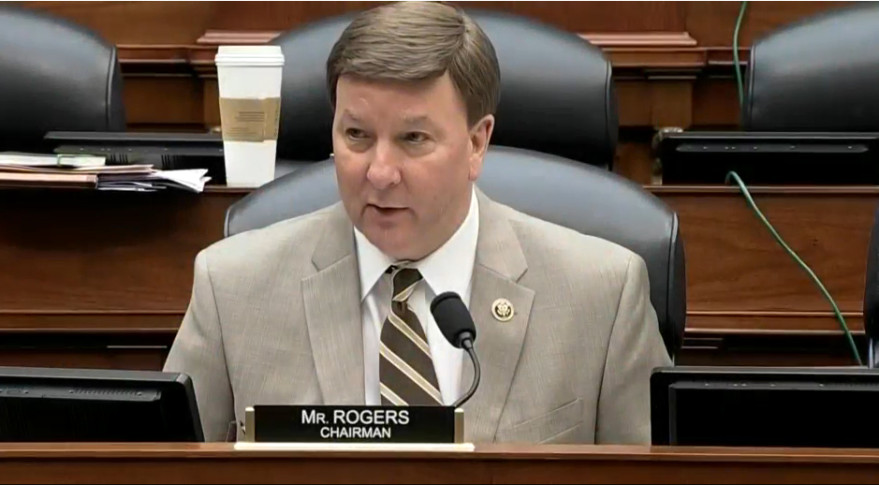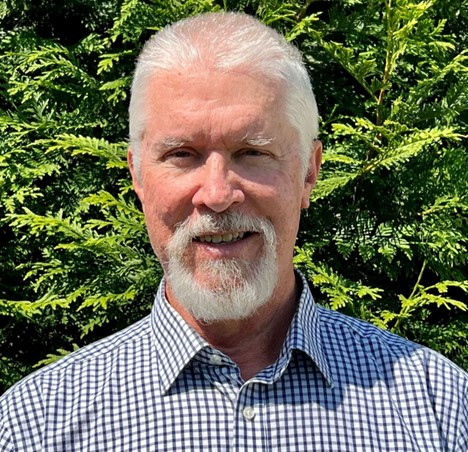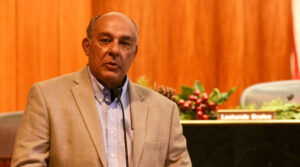Hyundai supplier fined for child labor violations

On Tuesday, Alabama Department of Labor Secretary Fitzgerald Washington announced that the ADOL has issued and collected more than $35,000 in civil monetary penalties for violations of Alabama’s Child Labor Law. Two businesses, SL Alabama, LLC, and JK USA were fined $17,800 each for multiple violations of the Child Labor Law. SL Alabama is an automotive supplier producing headlights and mirrors for Hyundai Motor Manufacturing in Montgomery. The facility is located in Alexander City, AL. JK USA is a temporary employment agency providing workers to automotive suppliers based in Opelika, AL. Both companies were cited for: three violations of employing a minor under the age of 16 in a manufacturing facility (3 violations = $15,000), two violations of employing minors aged 14 or 15 in a prohibited environment (2 violations = $600), two violations of working minors under the age of 16 outside of permissible hours (2 violations= $600), one violation of failing to obtain the proper Class 1 Child Labor Certificate permit (1 violation = $50), one violation of failing to obtain the proper Class 2 Child Labor Certificate permit (1 violation = $50), and five violations of failing to obtain proper identification documents (5 violations = $1,500). The case, which has drawn national attention to Alabama, was uncovered following a complaint. An investigation of the facility was conducted by ADOL’s Child Labor Inspectors, along with representatives from the United States Department of Labor, the United States Department of Homeland Security, and the Alabama Attorney General’s Office. The investigation determined that SL Alabama had employed three minors, aged 13, 15, and 15, in a prohibited manufacturing environment. All three of the minors were provided by JK USA, a temporary employment agency, but were performing work at SL Alabama. The minors were operating plastic bonding machines in a prohibited occupation and location. Two other 16-year-old employees were working without appropriate record-keeping on the premises. Neither SL Alabama nor JK USA had obtained any required Child Labor Certificates for any age group. JK USA provided the underage workers to SL Alabama but did not provide documentation regarding the three underage employees until required to do so by state and federal investigators. E-Verify had not cleared the minors. This web-based system allows enrolled employers to confirm the eligibility of their employees to work in the United States but was still provided to SL Alabama by JK USA. “This practice of providing and employing underage and undocumented workers is appalling,” Sec. Washington stated in a press release. “Employee safety, especially the safety of children, is a top priority. These businesses violated the law and put these children at risk, and it will not be tolerated in Alabama. We will vigorously investigate any business or industry suspected to be participating in this illegal activity. We will continue to work with our federal partners, the U.S. Departments of Labor and Homeland Security, and our state Attorney General’s office to assist in any further investigations or potential criminal prosecutions.” The Legislature has not given the ADOL the statutory authority to levy any criminal charges for violations of Child Labor Law. Both companies have submitted the penalties in their entirety. The SL Alabama has agreed to cut ties with JK USA and punish management employees as part of the deal that the company has agreed to in a settlement of a federal lawsuit brought by the U.S. Department of Labor. To connect with the author of this story, or to comment, email brandonmreporter@gmail.com.
Terri Sewell presents federal funds to Miles College for preservation of Williams Hall

Congresswoman Terri Sewell joined Miles College leaders on Monday for a ceremony announcing the award of federal National Park Service funds to preserve historic Williams Hall. This was part of a National Park Service (NPS) $9.7 million award to Historically Black Colleges and Universities (HBCUs). “Great morning at Miles College, where I presented a check for half a million dollars from the National Park Service that I helped secure to preserve Williams Hall on campus!” Sewell said on Facebook. “Our HBCUs have played such a critical role in our nation’s history and I will always fight to ensure they get the support they need to develop the next generation of Black leaders and scholars!” Williams Hall was constructed in 1907 and is the oldest building on the Miles College campus. Miles previously received $499,869 from the National Park Service to preserve and restore the historic building in August 2021. “Each year, as Congress makes critical decisions about which federal programs to fund, ensuring that preservation projects on HBCU campuses get the robust funding they deserve remains one of my top legislative priorities,” Sewell said. “I’m thrilled to see that Alabama HBCUs are once again beneficiaries of this program.” Sewell said that the award will allow the College to begin the next phase of restoring and preserving the historic building. The National Park Service announced back in July that it would award $9.7 million to HBCUs, with HBCUs in Alabama receiving $2.5 million. Alabama State University, Miles College, Selma University, Alabama A&M University, and Stillman College are all receiving funds. “I’m thrilled to announce that the National Park Service is investing $2.5 million to preserve historic structures on the campuses of Alabama’s HBCUs,” Sewell stated. “This is a big win for Alabama. Alabama’s HBCUs have played such a pivotal role in shaping the history of our nation, and I was so proud to help make this funding available, which will be used to preserve these cherished institutions.” Since the 1990s, the NPS has awarded more than $87 million in grants to over 85 of the remaining active HBCUs. Congress appropriates funding for the program through the Historic Preservation Fund, which uses revenue from federal oil and gas leases on the Outer Continental Shelf, providing assistance for a broad range of preservation projects without expending tax dollars. “For more than 180 years, Historically Black Colleges and Universities have provided high-level academics, opportunities, and community for generations of students,” said NPS Director Chuck Sams. “These grants enable HBCUs to preserve the noteworthy structures that honor the past and tell the ongoing story of these historic institutions.” Sewell is seeking her seventh term representing Alabama’s Seventh Congressional District. She faces opposition from Libertarian Gavin Goodman and Republican Beatrice Nichols. To connect with the author of this story, or to comment, email brandonmreporter@gmail.com.
Mike Rogers says Republicans will ‘root out’ wokeness in military if given control of Congress

Congressman Mike Rogers recently told Military.com that Republicans will be aggressively trying to root out wokeness in the military if voters give Republicans control of Congress in the midterm elections. Rogers said the GOP would put military personnel issues at the forefront of the agenda if they retake control of the House of Representatives next year. Rogers vowed to take aim at “woke” policies in the military. “All this wokeness in the military, we are going to be aggressively trying to root that stuff out,” Rogers said. Rogers said that doing so would help with recruitment and retention. Rogers is the ranking Republican on the powerful House Armed Services Committee and would likely chair the committee if the GOP wins the House. Fellow Republican House Armed Services Committee member Jim Banks (R-Indiana) agreed. “I think it’s one of our very top priorities to clean up the mess the administration has made with the excessive and dangerous COVID mandates on our troops at a time where we have historically low recruitment,” said Rep. Banks. “Those are issues that we’ve been very passionate about in the minority, and I guarantee we’ll be just as passionate about them when we get the majority. When it comes to the posture hearings and the legislative process of the NDAA, I think you can expect more of the same from what you’ve seen the last couple of years.” Republicans have criticized the Biden administration’s handling of the nation’s armed forces, including COVID-19 vaccine mandates that have threatened to kick service members out of the military for refusing the vaccine and mandatory diversity training that has been compared to critical race theory initiatives. “The Department of Defense’s only focus should be ensuring that our military is the most capable and lethal in the world,” Rogers said on social media. “Wokeness doesn’t win wars.” The military has ended Don’t Ask, Don’t Tell policies, allows women in combat roles, and accepts transgender people. Instead of this being a bonanza for recruiting, the military has struggled to meet recruiting goals. The Army alone is 25% below its recruiting goals for 2022. The Army came 15,000 recruits short of its goal of 60,000 for the 2022 fiscal year, which ended on September 30. The other branches have had to go into their pool of delayed entry program candidates to barely hit 2022 goals but put them behind for 2023. The Army plans to increase its investment in marketing and is expected to expand a new program for struggling recruits in order to achieve its goals. Army Secretary Christine Wormuth told reporters that a new recruiting task force is coming up with ideas. Still, any new plans would have to gel quickly to reverse the dramatically low enlistment numbers over the past year. Wormuth said that it is too early to speculate on whether or not the Army will meet its 2023 goals. Wormuth and Army Chief of Staff Gen. James McConville said that a new program that helps low-performing recruits meet academic and fitness standards is showing some promise. The Army is considering expanding the program to more sites. “We want to make sure that there is the amount of recruits that can do that,” McConville said. “The initial results that we’re seeing is this may fundamentally change the way that we do recruiting.” McConville recently made a trip to see the program at Fort Jackson, South Carolina. In August, McConville said the program could be set up at three other Army training bases. Commanders had suggested they could put up to 10,000 potential recruits through the classes. The program provides up to 90 days of academic or fitness instruction to help recruits improve to the point where they can meet the minimum standards to enter the military. Rogers has represented Alabama’s Third Congressional District since 2002. Rogers is seeking his eleventh term in the House of Representatives. He faces Libertarian Thomas Casson and Democrat Lin Veasey in the November 8 general election. To connect with the author of this story, or to comment, email brandonmreporter@gmail.com.
Rick Chandler: Big money & Alabama politics

Another month and another pile of money has been delivered to Alabama’s incumbent political figures. Whether they need it or not, there are a number of organizations that gleefully throw money at Alabama’s politicians out of the goodness of their hearts, or more likely, it is because they are looking to secure favorable future decisions from those same politicians. During September, my Republican opponent, Author Orr, was “gifted” another $17,250 to bring the total amassed in his campaign war chest to almost one million dollars ($982,732). Of that latest monthly total, $5,000 came from Cook’s Pest Control, a company my opponent is employed by as the Executive Vice President. Customers should be comforted that their monthly pest control fees have provided a surplus to the company sufficient to allow for such a generous donation. What makes the situation even more absurd is that there were actually zero expense dollars paid out of this account during the month of October. The candidate is obviously confident that his Libertarian opponent has absolutely no chance of unseating him. So, the need to continually amass large sums of money each month would not appear to be necessary, unless there are bigger political plans down the road. The previous month’s haul of $22,000, plus the other months in the 2022 election year, have netted my opponent a total of $235,392 thus far. This money madness is, of course, not just limited to my opponent. For example, Kay Ivey raked in a staggering $316,011 just during the month of September, and Will Ainsworth has a ridiculous $1,268,371 in his campaign war chest. This reflects the unfortunate situation of Alabama politics. A culture where lobbyists, special interest groups, and PACs continue to exert massive influence over our political leaders to the detriment of our economy, our educational system, and our basic freedoms as Americans. The process should focus more on the candidate’s positions and plans for leading the state. The current system discourages fairness, and it is shown repeatedly when incumbent candidates refuse to engage in debates and explain their visions to the voters because they will simply outspend their opponents in advertising and at various political functions. Alabama is one of the few “special” states that allow unlimited contributions from individuals, their state parties, PACs, corporations, and unions. It doesn’t have to be this way, however. Most other states enforce donation limits by source, and thereby introduce a certain level of fairness in the election process. For instance, Alaska limits an individual’s contributions to a maximum of $500 per candidate per year. They also limit the aggregate total of contributions from non-resident donors. Arkansas limits the amounts a candidate’s state party can donate to $2,700 per election. Georgia limits PAC contributions for state-wide candidates to $7,600 for primary/general elections and $4,500 for runoffs, and for legislative candidates there is a PAC limit of $3,000 for primary/general elections and $1,600 for runoffs. Mississippi imposes corporate campaign limits of $1,000 per candidate per year. Kentucky prohibits any contributions from unions. Again, Alabama imposes no limits that politicians can receive from any of these sources. While not all politicians are blatantly corrupt, there is most definitely an expected behavior for those officeholders who have willingly accepted large sums of money as part of the campaign process. If just a few political newcomers, like the current crop of Libertarian candidates who receive little to no campaign donations, succeed in getting elected in Alabama in November, it could ignite a new fervor of political interest by the entire voting population. New faces without any financial ties to legacy power brokers would provide a badly needed jolt and drastically shake up the current big-money monopoly. This fresh start could make for a new political landscape, and would significantly improve on the sad 25% voter participation rate we have seen in the last round of elections. God bless America, and God bless Alabama. Rick Chandler is the Libertarian candidate for Alabama State Senate District 3. Alabama State Senate District 3 includes Morgan County, Southwestern Madison County, and Southeastern Limestone County.
‘Accelerating Alabama’ panel looks to the state’s economic present – and future

Accelerator programs are seen as key to Alabama’s ongoing emergence as a growth center for technology, innovation and entrepreneurialism. Their role and contributions – facilitating access to investors, mentors, services and other critical support for startup and early-stage companies – was the subject of “Accelerating Alabama: The Rise of Accelerator Programs,” a panel discussion hosted by the Alabama Collective on October 6. The discussion was presented as part of the Alabama Collective’s “All Access” programming in conjunction with the Morehouse Tuskegee Classic football game October 8 at Birmingham’s historic Legion Field. It is the latest of several events and activities hosted by the organization, which was launched in 2021 to strengthen the partnership between diverse tech, innovation, and entrepreneurial ventures and initiatives in Birmingham and Montgomery. “We are bringing a genuine focus on elevating minority technology talent and supporting and encouraging entrepreneurs,” said Charise Stokes, executive director of TechMGM, in introductory remarks at the panel discussion in Birmingham. Along with TechBirmingham, TechMGM led the formation of the Alabama Collective to help build a collaborative approach to positioning the central Alabama region as a major innovation hub in the Southeast. Accelerators are a critical element. “We see the power of accelerators in an ecosystem of tech entrepreneurship,” Stokes said to the crowd of about 60 at the Wine Loft in downtown Birmingham. “They really are the fuel for what we’re accomplishing from a standpoint of technology and innovation. Panelists for “Accelerating Alabama” were Lindsay Edwards, chief investment officer of Opportunity Alabama; Brooke Gillis, program manager for TechStars Alabama EnergyTech Accelerator; Charles Jackson, program director at Montgomery TechLab; Nikki Johnson, director of the Bronze Valley Accelerator; and Douglas Watson, managing director of the health tech accelerator for Prosper. Tony Smoke, senior vice president of Marketing and Economic Development at Alabama Power, moderated the panel. Smoke said Alabama Power and public and private sector partners across the state see expanding economic opportunity as the key to Alabama’s future and are collaborating to make it happen. “The catalyst to make Alabama a better state is in this room,” said Smoke. “Supporting this ecosystem is the best thing we can do for the future of Alabama and its people.” The discussion focused on the variety of accelerator programs in Alabama and why they are instrumental in efforts to attract startups, diversify local and state economies, and foster the startup and growth of minority and women-owned businesses. Among the topics were retaining technical and creative talent in Alabama, eliminating opportunity gaps in education and employment by investing time and resources in historically Black colleges and universities (HBCUs), using innovation to create new opportunities across business sectors, and the deliberateness of efforts to help startups thrive. “In larger cities,” Watson said, “founders don’t get the individual, ‘concierge’ service and attention they get here. The people and organizations that support founders in Birmingham and Montgomery are doing it to build a community. That attitude attracts people and makes them want to stay.” Smoke referred to collaboration as “the magic sauce” for ensuring immediate and long-term growth and progress in Alabama. The panel agreed that collaborative efforts already beginning to bear fruit bode well for the future. “We’re accomplishing more by collaborating,” said Gillis. “We’re better together.” The panel was also asked to predict what Alabama’s tech and innovation ecosystem will look like in 10 years. Answers envisioned the impacts of continued growth and recruitment of local and outside sources of capital, effectively targeted investments in education and training, and commitment to diversity, equity and inclusion. “In 10 years, we want to see larger and more frequent exits by founders,” said Edwards. “We’ll also be seeing the real impact of Opportunity Zones, including how investments in Opportunity Zones have been used to leverage things like historic tax credits to help rehab existing buildings.” “We’ll be successful in introducing entrepreneurship to students as an option for their future,” Johnson predicted. Following the discussion, Smoke reflected on Alabama Power’s rationale for supporting the Alabama Collective and facilitating the panel discussion – and on the company’s overall effort to enhance the climate for growth in technology, innovation and entrepreneurialism. “These are the industries that will carry Alabama into the future,” Smoke said. “Having the opportunity to support these businesses and grow Alabama’s economy is what’s important for us. That’s why we’re spending time and effort in this space.” Tony Smoke on the importance of Alabama accelerator programs from Alabama NewsCenter on Vimeo. Republished with the permission of The Alabama NewsCenter.
USDA unveils a $500 million stimulus program for domestic fertilizer production

The Biden administration has announced $500 million in grant money to stimulate American-made fertilizer production. Secretary of Agriculture Tom Vilsack unveiled the new grant program, called the Fertilizer Production Expansion Program, on September 27. Agronomist Emerson Nafziger, a crop specialist with the University of Illinois Extension for the past 36 years, said he was intrigued and surprised to hear the USDA announcement. “Increase domestic production of fertilizer; that is not a phrase we have ever heard from the federal government,” Nafziger told The Center Square. He is interested to hear what other agriculture policy watchers have to say about the effort. “It’s pretty unusual for the government in the U.S. to try to manipulate supply for inputs like that,” Nafziger said. Under the new program, grants will be used to support “independent, innovative and sustainable American fertilizer production” to supply American farmers. The goal is to expand the manufacturing and processing of fertilizer and nutrient alternatives in the U.S. and its territories. “Recent supply chain disruptions have shown just how critical it is to invest in the agricultural supply chain here at home,” Vilsack said in an announcement of the program. The Commodity Credit Corporation will provide the funding. Prices for nitrogen, phosphorus and potassium fertilizers are significantly higher than they were a year ago, Nafziger said. “It is a new world in terms of prices and availability of fertilizers in particular,” he said. “That is what people are thinking about this fall.” Uncertainty on world markets and high natural gas prices caused fertilizer prices to peak in May. The Russian invasion of Ukraine was the prime driver of the price spikes. According to the Commerce Department, the U.S. imported $262.6 million worth of urea ammonium nitrate fertilizers from Russia in 2021. The U.S. imported an additional $231.1 million in fertilizers from Trinidad and Tobago in 2021. Prices for most fertilizers eased somewhat during the summer. Dealers have healthy supplies on hand. But some vendors are telling farmers the same thing this fall that they said last year: buy now because no one knows what the situation will be next spring. “It’s a frustrating situation for individual farmers because they need to make an effort to see if they can get all the fertilizer that they need,” Nafziger said. In spite of the fears last fall that fertilizers might be in short supply, most farmers were able to find what they needed this past spring. Farmers who were willing to pay were able to buy the fertilizers that they wanted, Nafziger said. “Most people got most of what they had hoped to get,” he said. Nafziger is anxious to see how the USDA’s $500 million grant program to stimulate more fertilizer production in the U.S. will play out. “It really is interesting,” Nafziger said. The United States has pretty good production capacity for ammonia, he said. A large plant was started up in eastern Iowa just a few years ago. Republished with the permission of The Center Square.
‘Financial Drowning’: Social Security could give seniors historic raise this week due to inflation

The Social Security Administration will increase benefit payments this week to respond to rising inflation, analysts say. The agency is expected to announce the scheduled benefits increase Thursday, and the Senior Citizens League has predicted that the increase will be 8.7%, one of the largest hikes ever. “Across the board, retired and disabled Social Security recipients spend a bigger portion of their incomes on healthcare costs, housing, and food and less on gasoline,” said Mary Johnson, Social Security and Medicare policy analyst for the Senior Citizens League. “Over the past 12 months, they rank food costs as their fastest growing expenditure, housing, and transportation in that order. Wall Street, however, clearly believes that the August numbers indicate that inflation is still with us, and higher than hoped. We agree. In fact, according to the Bureau of Labor Statistics August press release, ‘increases in shelter, food and medical care were the largest of many contributors to the August increase. “A COLA of 8.7% is extremely rare and would be the highest ever received by most Social Security beneficiaries alive today,” she added. The latest BLS data put the consumer price index increase at 8.3% over the past 12 months. Food prices, in particular, have soared. “The food at home index rose 13.5 percent over the last 12 months, the largest 12-month increase since the period ending March 1979,” BLS said. “The index for other food at home rose 16.7 percent, and the index for cereals and bakery products increased 16.4 percent over the year. The remaining major grocery store food groups posted increases ranging from 9.4 percent (fruits and vegetables) to 16.2 percent (dairy and related products).” The higher Social Security payments are intended to help seniors on a fixed income struggling to make ends meet. “I would say while this is currently a chronic problem every year, yes, indications are that the COLA will not reflect pockets of persistently high inflation affecting retired and disabled Social Security recipients,” Johnson said. “That puts tens of millions of retirees at risk of continuing to fall behind, or as our reader described, ‘financial drowning.’ Those who receive Social Security are quick to confirm they are not just at risk, those who have been retired for any length of time, have fallen behind financially. The buying power of Social Security benefits has occasionally improved in the past, but that may not be enough when retirees have spent down their savings to stay afloat in years when inflation was going up. The lifeboat is leaking and taking on water, leaving older Americans at risk of financial drowning.” Republished with the permission of The Center Square.


